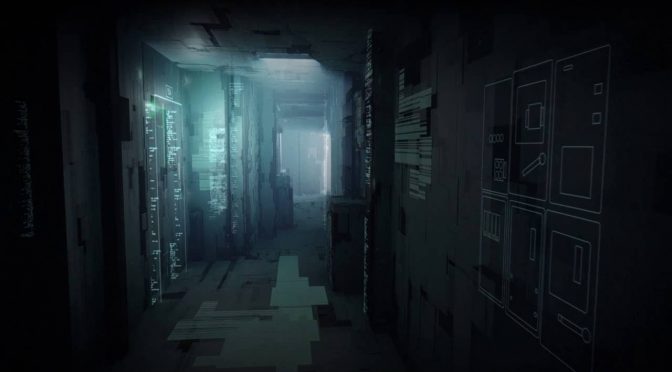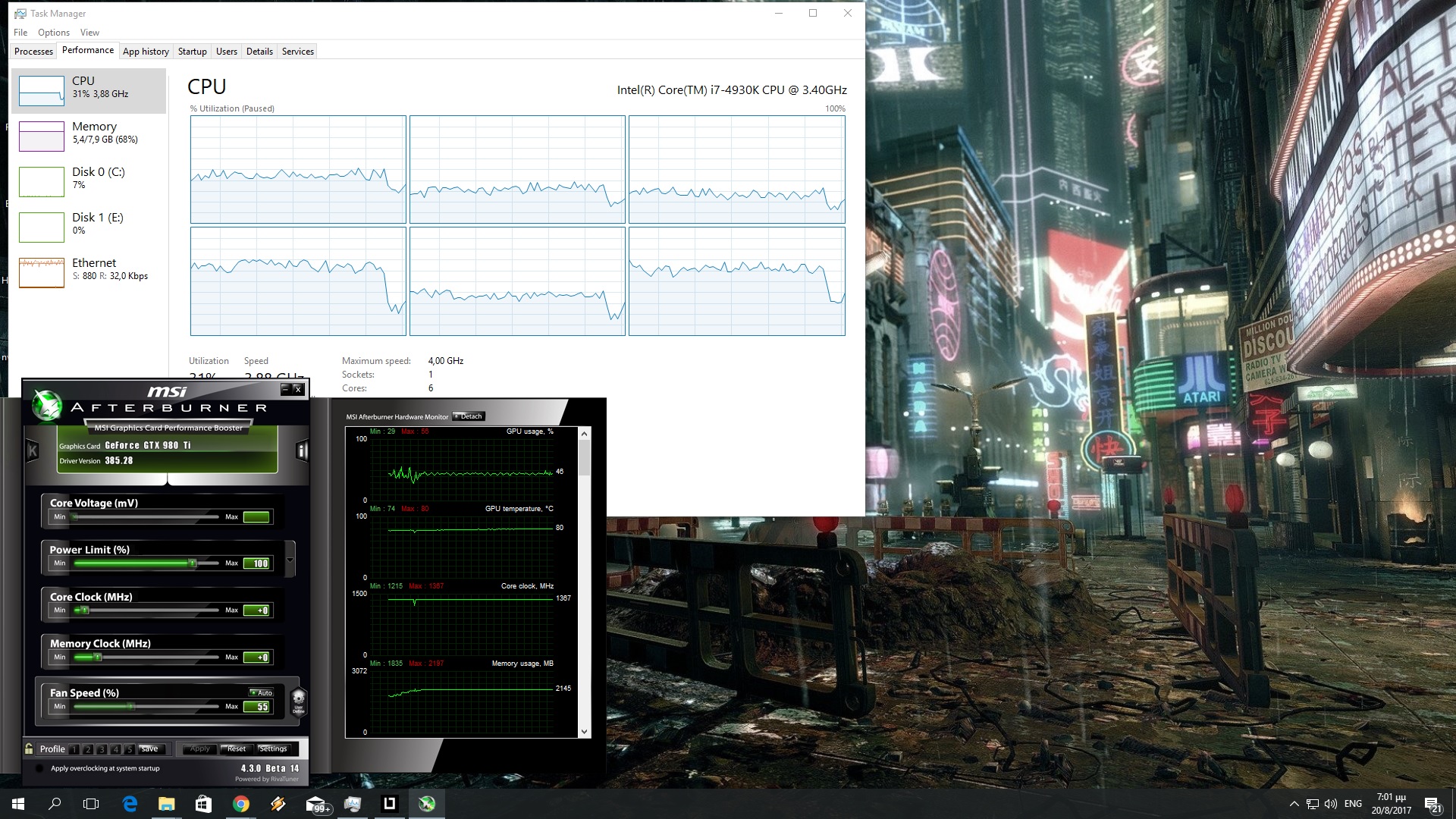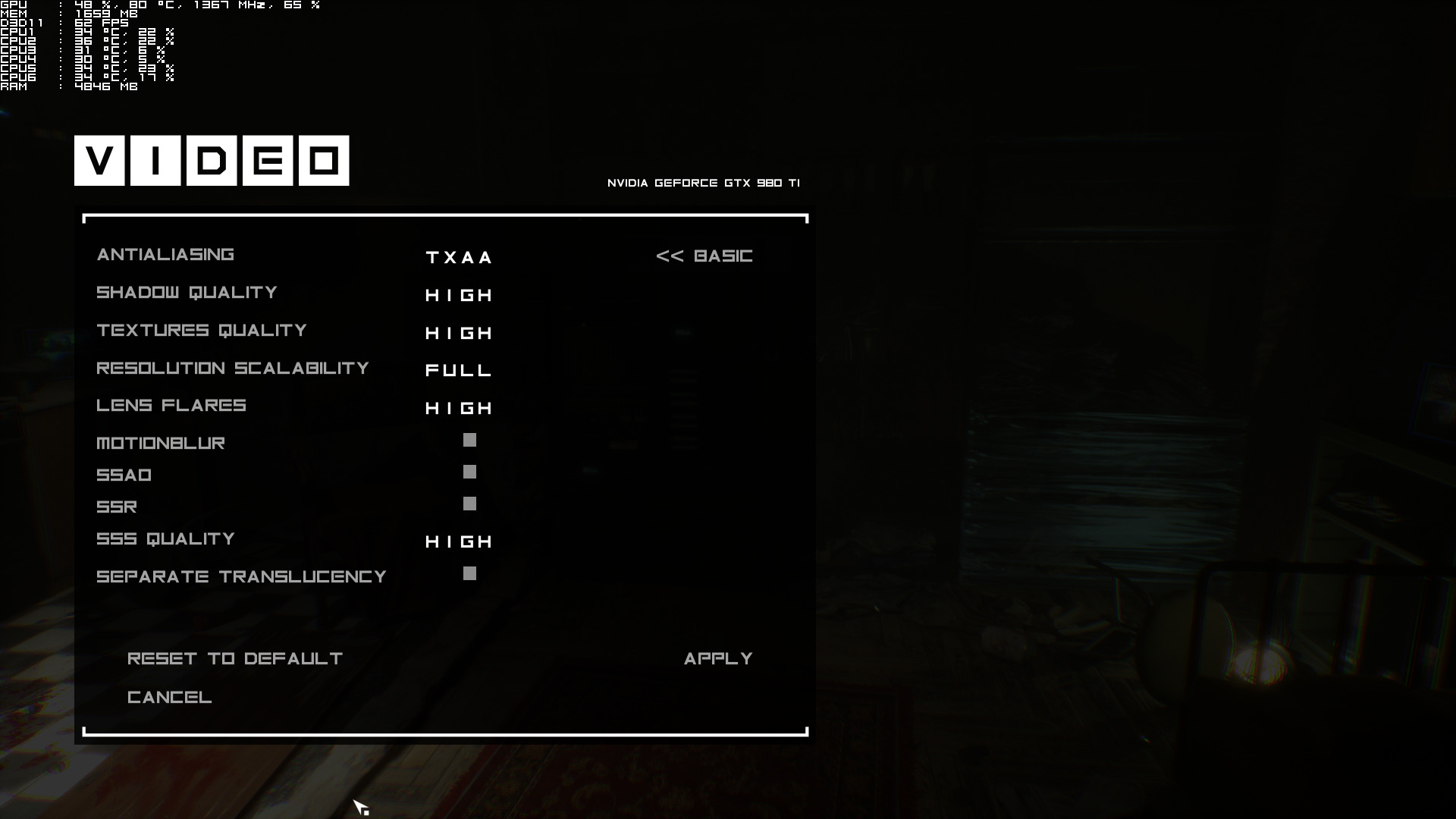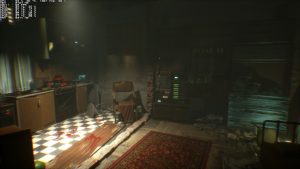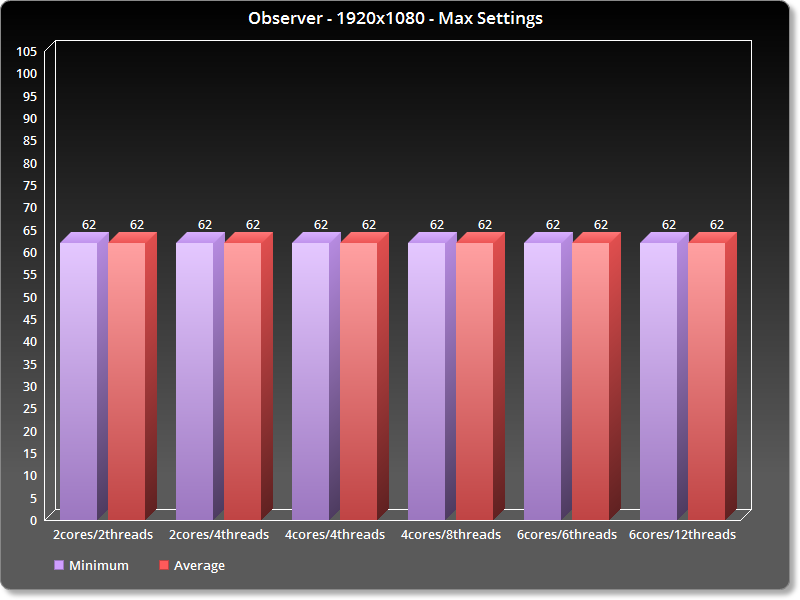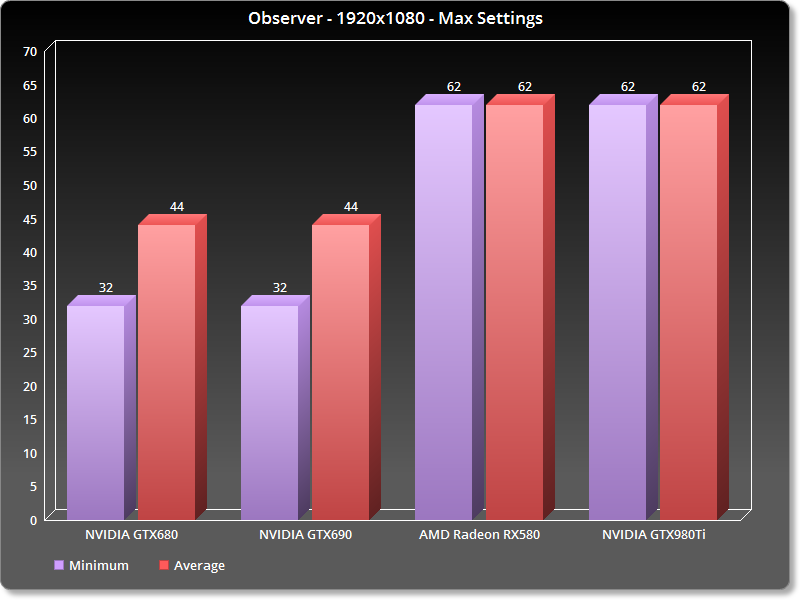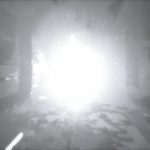Observer is a new cyberpunk horror game from Bloober Team, the creators of Layers of Fear. In it, players take the role of the Observer, the new front line of neural police, as you hack into the jagged minds of the insane. The game has just been released on the PC and even though it comes from a small team, we’ve decided to put it to the test.
For this PC Performance Analysis, we used an Intel i7 4930K (overclocked at 4.2Ghz) with 8GB RAM, AMD’s Radeon RX580, NVIDIA’s GTX980Ti and GTX690, Windows 10 64-bit and the latest version of the GeForce and Catalyst drivers. NVIDIA has not included any SLI profile for this title, meaning that the GTX690 behaved similarly to a GTX680.
As said, Observer comes from a small team. The game is powered by Unreal Engine 4 and offers a limited number of graphics settings. PC gamers can adjust the quality of shadows, textures, anti-aliasing, resolution scalability, lens flares, and SSS. Moreover, PC gamers can enable or disable motion blur, SSAO, SSR and separate translucency. What’s also disappointing here is that there is no option in-game to disable the awful Chromatic Aberration effect that has been implemented. Thankfully, though, PC gamers can follow this guide in order to disable it.
- Locate folder C:\Users\your user name\AppData\Local\TheObserver\Saved\Config\WindowsNoEditor
- Open up the Scalability file and paste this:
[PostProcessQuality@3]
r.SceneColorFringeQuality=0
r.SceneColorFringe.Max=0
r.DepthOfFieldQuality=0 - Save and then make the file read-only
Below you can find two screenshots. The image on the left is with Chromatic Aberration and the image on the right is without this annoying effect.
[nextpage title=”GPU, CPU metrics, Graphics & Screenshots”]
In order to find out how the game performs on a variety of CPUs, we simulated a dual-core and a quad-core CPU. Given the fact that Observer is basically a walking simulator, it does not require a high-end CPU in order to be enjoyed. In fact, even our simulated dual-core system was able to offer a constant 62fps experience (the game is capped at 62fps) at 1080p on max settings.
The game is also easy on the GPU side, provided you are not targeting 4K resolutions. Both our GTX980Ti and our Radeon RX580 had no trouble running Observer with 62fps on max settings at 1080p. As we’ve already said, NVIDIA has not released any SLI profile for this title yet, meaning that our GTX690 behaved similarly to a GTX680 and ran the game with a minimum framerate of 32fps and an average framerate of 44fps. In 4K, our GTX980Ti was able to stay above 30fps (with a minimum of 30fps and an average of 39fps).
Graphics wise, Observer looks quite good. Thanks to Unreal Engine 4 and its intrigue art style, the game is pleasing to the eye. While you will definitely notice some low-resolution textures, most of them look good. The game also packs some really cool special effects (especially during the dream sequences). Unfortunately, there is no option to adjust the really low FOV, however you can edit the game’s Engine.ini file in order to increase it. All you have to do is follow this guide.
- Locate folder C:\Users\your user name\AppData\Local\TheObserver\Saved\Config\WindowsNoEditor
- Open up the Engine file and paste this:
[/script/engine.localplayer]
AspectRatioAxisConstraint=75 - Replace 75 with your desired FOV value
- Save and then make the file read-only
All in all, Observer runs great on the PC. We did not notice any mouse acceleration/smoothing issues, and there are proper keyboard on-screen indicators. Observer looks good (mainly due to its art design) and runs exceptionally well on a variety of PC configurations. The game does lack some options to tweak FOV and remove Chromatic Aberration, however you can follow our guides in order to adjust them.
Enjoy!

John is the founder and Editor in Chief at DSOGaming. He is a PC gaming fan and highly supports the modding and indie communities. Before creating DSOGaming, John worked on numerous gaming websites. While he is a die-hard PC gamer, his gaming roots can be found on consoles. John loved – and still does – the 16-bit consoles, and considers SNES to be one of the best consoles. Still, the PC platform won him over consoles. That was mainly due to 3DFX and its iconic dedicated 3D accelerator graphics card, Voodoo 2. John has also written a higher degree thesis on the “The Evolution of PC graphics cards.”
Contact: Email

